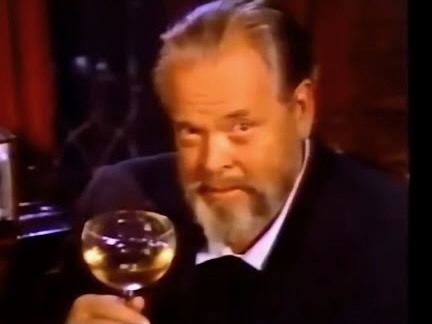
That’s Orson Welles who as a 23 year-old wunderkind set America’s nerves on edge with the 1938 radio play War of the Worlds — listeners believed they were hearing a live report of an alien invasion — and later directed some of the twentieth century’s greatest cinema. Here he is in his sixtes, appearing as pitchman for mass-scale California wine producer Paul Masson, about to intone words that have become immortal in the annals of advertising: “We will sell no wine before its time.” Such talk is a primary source of the maddeningly persistent meme that old wine is the best wine. But is it?
The very first village vintners understood the value of letting newly-made wine rest in a cool, dark, still place for weeks or months. Qvevries, those large, womb-shaped clay pots in use in the Caucasus since the neolithic era, are ideal for encouraging the three most important effects involved in maturing wine: clarification, tannin agglomeration and incremental oxygenation.
Clarification simply refers to undissolved solids gradually falling out of solution. This happens relatively quickly. In young wine, tannin molecules (responsible for sensations of texture) are small and discrete, with a raspy feel. With a bit more time, these begin to glom together, making larger molecules with a smoother, more comfortable feel. At the same time, a gradual ingress of oxygen molecules facilitated by a tightly sealed but not perfectly impermeable container (like a wooden barrel or clay amphora) urges wine toward a kind of steady, balanced composure.
A few progressive, elite Bordeaux estates began offering wine in cork-sealed bottles toward the end of the 17th century, selling it early in its life cycle, with the idea that customers would assume responsibility for bringing the wine to some imagined peak of maturity by holding it in their personal cellars for years or even decades.
The truth is that “peak” in this context is more a matter of taste than some objective target or standard. The British love for fine old mature claret, which was specifically built for this kind of handling, evolved into a taste for wine that was, by modern standards, rather feeble — not unlike a once vivid rose now dried out and faded by years spent pressed in the pages of a book.
Dried flowers and fresh flowers each have their unique charm. If balsamic elements combined with a caressing texture and a kind of dreamy somnolence appeal to you as a wine drinker, some extended time in barrel or bottle will be required to achieve that state. If you’re excited by energy, verve and primary fruit flavors, time is much less of an issue.
One point often lost sight of is the effect of long cellaring on what I will call wine identity. In my experience, the scents and flavor of bottle age will, at first gradually and then nearly totally, overwhelm the scents and flavors that once made the wine distinctive and identifiable, stripping it of context.
Like many other things, including people, wine can be too young or too old for a given purpose. It’s your call.
-Stephen Meuse